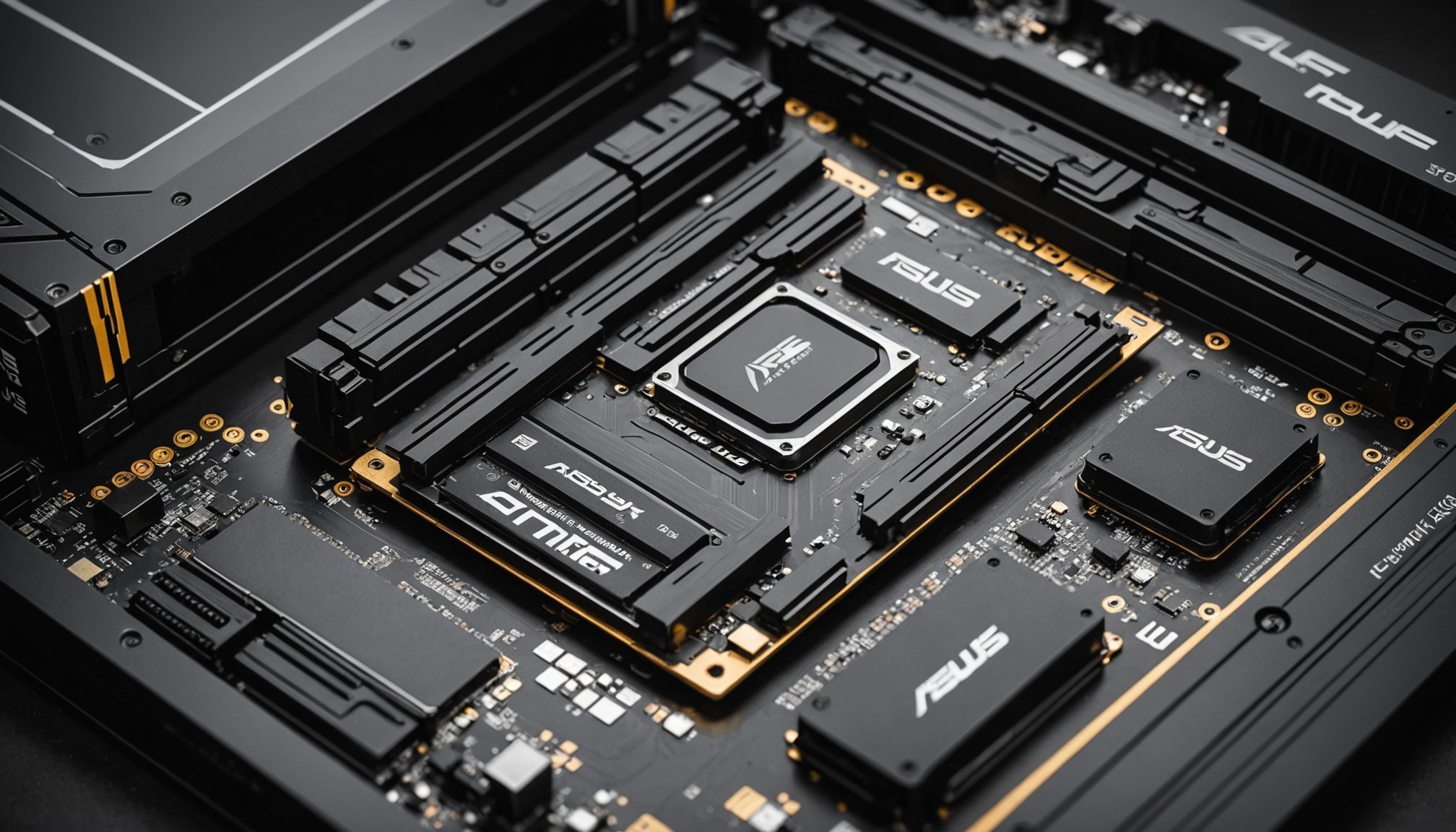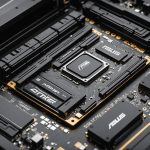Understanding NVMe SSDs and Their Importance
NVMe SSDs have reshaped the landscape of data storage and retrieval with their impressive speed and efficiency. Unlike traditional storage options which use the SATA interface, NVMe SSDs utilise the PCIe bus system, providing a significant boost in data transfer rates. This advancement is particularly beneficial for tasks demanding high performance, such as gaming or intensive system applications. With an NVMe SSD, you’ll experience reduced loading times and seamless operation, essential for any gaming performance enthusiast.
The optimal SSD configuration plays a vital role in leveraging these benefits. Configuring your system to fully utilise an NVMe SSD ensures that you are making the most out of its capabilities. Proper setup can lead to markedly improved system responsiveness and game load times.
Also read : Maximize Your Small Business Storage: The Ultimate Guide to Optimal RAID Configurations for QNAP TS-673A NAS
The ASUS TUF Gaming X570-Plus motherboard supports NVMe SSDs, enabling users to enhance their gaming setups. It features slots for multiple NVMe SSDs, facilitating a tailored storage solution that matches your gaming needs. By exploiting the potential of this motherboard, coupled with a strategically chosen NVMe SSD, users can achieve notable enhancements in both gaming and overall system performance, making it a crucial component for any serious gamer or power user.
Installing Your NVMe SSD in ASUS TUF Gaming X570-Plus
Installing a NVMe SSD in your ASUS TUF X570-Plus motherboard can significantly enhance your system’s performance. However, proper hardware setup is crucial to fully leverage these benefits.
Also read : Ultimate Guide to Optimizing RAID 5 on Your Synology DS920+: Setup Tips for Unmatched Performance
Necessary Tools and Materials
Before starting the installation, ensure you have the necessary tools: a screwdriver, the NVMe SSD, and the ASUS TUF X570-Plus motherboard. A pair of anti-static gloves is recommended to prevent electrostatic discharge, which could damage components.
Step-by-Step Installation Process
Begin by powering off your system and disconnecting it from any power source. Open the case to access the motherboard. Identify the M.2 slot on the ASUS TUF X570-Plus where the NVMe SSD will be installed. Gently insert the SSD into the slot at a 30-degree angle, ensuring the gold connectors are fully engaged. Secure the SSD with the screw provided. Close the case and reconnect your system.
Confirming Installation in BIOS
To confirm installation, boot your system and enter the BIOS by pressing the appropriate key during startup, usually “Delete” or “F2”. Once in BIOS, navigate to the storage section to check if your NVMe SSD is recognised. If correctly installed, the SSD should appear in the BIOS list of storage devices, confirming success.
Optimizing BIOS Settings for NVMe SSDs
To harness the full potential of your NVMe SSD, you must adjust certain BIOS settings. Start by enabling the correct mode for NVMe drives like RAID or AHCI, which can significantly impact performance. Most users find AHCI mode preferable for non-RAID configurations due to improved compatibility and speed benefits.
Adjusting Key BIOS Settings
Upon entering the BIOS, look for the “SATA Configuration” section. Setting the mode to AHCI can enhance both the system’s speed and reliability. Another crucial setting is PCIe Speed, often adjustable to Gen3 or Gen4. Ensure it aligns with your NVMe SSD’s specifications, as a mismatch can throttle performance.
Recommended BIOS Updates
Regularly updating your BIOS is essential. It can contain vital improvements for SSD functionality, like enhanced compatibility and bug fixes. ASUS provides detailed instructions on their website, allowing users to keep their ASUS TUF Gaming systems optimised effortlessly.
Make these adjustments thoughtfully and progressively test performance. Improved settings directly translate to better load times and overall performance optimization, ensuring your NVMe SSD and system operate at peak efficiency. Remember, effective BIOS configuration can be the key to unlocking your system’s potential.
Configuration Optimization Techniques
Achieving optimal performance optimization with your NVMe SSD begins with careful attention to details such as file system formats and memory settings. For gaming speed enhancements, using the NTFS file system is generally recommended due to its excellent support for large-volume data handling and compression capabilities.
Incorporating tools like TRIM can significantly enhance your SSD’s efficiency. TRIM helps by allowing the operating system to inform the SSD’s controller which blocks of data are no longer in use and can be cleared, thus managing space effectively and maintaining speed.
Fine-tuning your virtual memory settings adds another layer of efficiency. By manually setting your page file size to a specific value instead of leaving it as system-managed, you can reduce unnecessary disk activity—resulting in longer SSD lifespan and stable performance.
Optimising SSD configuration also includes keeping an eye on firmware updates specific to your motherboard like the ASUS TUF. Regularly check for firmware improvements that could further aid your gaming speed.
By focusing on these configuration techniques, your system is not only ready for demanding tasks but also remains agile and responsive over time.
Common Pitfalls and Troubleshooting
Understanding the common issues that may arise during NVMe SSD setup is crucial for maintaining optimal SSD performance. Mistakes often occur during the installation phase, leading to connectivity and performance issues. One frequent mishap is incorrect seating of the SSD in its M.2 slot, which can disrupt the signal and result in non-recognition by the system. Always ensure the SSD is properly aligned and secured with its screw.
Once installed, overheating is another concern with NVMe SSDs due to their high-speed data transfers. Ensure adequate cooling solutions, like heat sinks or efficient case airflow, are in place to prevent throttling.
In terms of troubleshooting, if performance dips after configuration, revisit your BIOS settings and confirm that optimal parameters, such as AHCI mode for non-RAID setups, are engaged.
Connectivity problems may also arise from outdated SSD firmware. Regularly updating the firmware ensures compatibility and resolves potential bugs.
For addressing these troubleshooting issues, employ systems like BIOS diagnostics and SSD management applications, which offer insightful performance metrics and problem alerts, helping you maintain your SSD’s effectiveness and longevity. Being proactive in recognising and solving common pitfalls ensures the sustained reliability of your gaming setup.
Performing Firmware Updates and Maintenance
Keeping your NVMe SSD updated with the latest firmware ensures optimum performance and longevity. Using routine maintenance optimises both gaming and system activities.
Checking Current Firmware Version
First, determine the current firmware version installed on your SSD. Access your system’s device manager or use SSD management software to view this information. Knowing the version helps in verifying the availability of updates.
Steps for Updating Firmware
Follow a straightforward approach for updating your SSD firmware:
- Visit the manufacturer’s website to check for updates.
- Download the appropriate firmware update tool and execute it, following on-screen instructions meticulously.
- Ensure your device is connected to a reliable power source during the process to avoid interruptions.
Maintaining SSD Health
To maintain your SSD’s health, regular maintenance is key. Implement best practices such as:
- Ensuring sufficient airflow within your system for effective cooling.
- Using SSD-specific utilities to run diagnostic tests and optimise performance.
- Avoid excessive data writes when possible to prolong the SSD’s lifespan.
By maintaining updated firmware and regular upkeep, your SSD remains efficient, enhancing overall system speed and ensuring a flawless gaming experience.
Measuring and Benchmarking Performance
Evaluating the performance benchmarks of your NVMe SSD ensures you’re capitalising on its full potential. Utilising the right SSD testing tools can provide critical insights into system efficiency.
Recommended Benchmarking Tools
To accurately assess your SSD, tools such as CrystalDiskMark and AS SSD Benchmark are invaluable. They simulate realistic usage scenarios to measure crucial metrics like sequential read/write speeds and input/output operations per second (IOPS). These measurements are pivotal for understanding your SSD’s true capabilities.
Interpreting Benchmark Results
Once benchmarks are conducted, deciphering the outcomes is essential. Look for consistency in performance benchmarks. High sequential read/write speeds signify excellent data transfer efficiency, crucial for gaming speed and large file handling. Conversely, lower numbers might indicate the need for SSD optimization interventions.
Comparison with Previous Configurations
By comparing results from prior SSD configurations, you gain insights into the effectiveness of your optimisations. Notable improvements in metrics like IOPS and throughput confirm the success of your setup adjustments. Such evaluations help ensure your system remains tailor-fitted for optimal performance optimization over time, maximising both gaming and overall usability enhancements.











